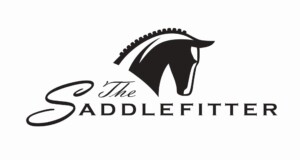The author Kathryn Sullivan-Butt is The Saddlefitter a Society of Master Saddlers Qualified fitter, ASFA fitter and an EA accredited coach. With formal saddle and saddlefit training in Australia, UK, US and Europe she is fortunate to have had the opportunity to train under (and quite frankly ask endless questions of) some of the industry’s most respected leaders. She fits full time in South-East Queensland.
Leather, quality control and longevity
There is nothing quite like the patina of a quality leather, waxy, pliable and hand crafted into a beautiful saddle. You can’t help but want to trail your fingers along its surface and while you aspire to have a saddle made with the best quality leather ¦. you can’t help but wonder why the difference in price. Is it worth it? Or is the intoxicating smell of quality leather just that ¦ intoxicating so you want it with no justification. When it comes to leather however your olfactory senses are not failing you and quality leather is desirable for safety, longevity and comfort.

Choosing a quality leather begins with the animal from which the hide came from. Thicker/stronger hides typically come from older beasts, that were slow grown (grass fed rather than feedlot with cattle), colder climates, no excessive fat coverage and few parasites such as ticks or lice that damage the hide directly or irritate the animal to scratch and mark the skin. Scars from cuts and scrapes will all diminish the hide value, although no hide is totally blemish free so some marks are to be expected on even the best full grain hides and indeed indicate that the leather has not been sprayed or treated to cover a high level of damage.
Once the hides are chosen the method of tanning and manufacture also greatly influence the quality of the leather produced. Vegetable tanning is a process that can take many months and is based on the tannins naturally found in barks and plants. The leather produced from vegetable tanning is generally considered more pliable and of better quality. Alternatively chrome based tanning is a quicker process using chromium salts to tan the hide. Chromed leather has a blue hue and while often used in quality saddles for girth points is not favoured elsewhere on these saddles. Being quicker and cheaper to produce however chrome leather may be found in cheaper saddles sprayed in the desired colour.
Quality full grain leather with minimal blemishes demands a premium and comes at a cost. So often leather is processed to imitate this quality product at a lesser price. Top grain leather is leather that has been split to make softer and pliable and often sanded to remove flaws, an artificial grain may then be pressed in to imitate the full grain leather. Splitting and sanding in top grain leather has the potential to weaken the leather which may affect its long term durability. When colouring drum dyed leather has a colour that permeates through the leather and over the years acquired a rich patina as opposed to leather sprayed with a colour that may affect breathability, rub through and be used to cover blemishes in the leather.
Even once processed (and assuming only the best quality hide chosen and highest level of tanning applied), the section of the hide used will affect the value and longevity of the saddle. The strongest part of the hide is found in the butt section (butt leather) which is generally considered the premium leather in a hide. Belly leather (while still useful in certain parts of a saddle) would not be used in a quality saddle in areas of high wear or where strength required as it is a thinner leather prone to stretching ¦ but being cheaper may be found in saddles where manufacturers are less demanding.
Finally as any good saddle craftsman knows, no amount of quality workmanship will rescue a product made from inferior leather. Poor quality leather will always result in an inferior saddle. A master craftsman wants his tack to age beautifully and give years of service for this reason he will choose leather as good as the budget allows. In this when choosing a saddle we should take the same approach.




